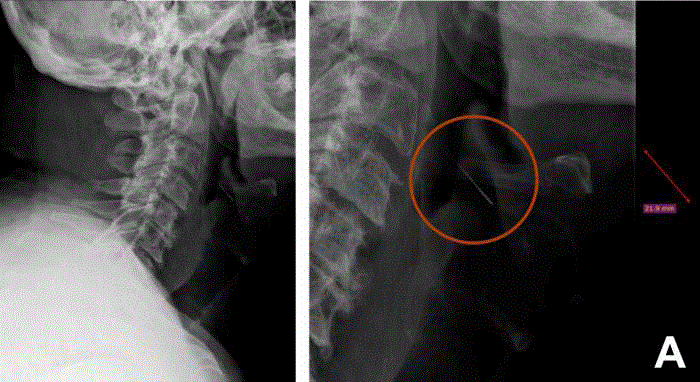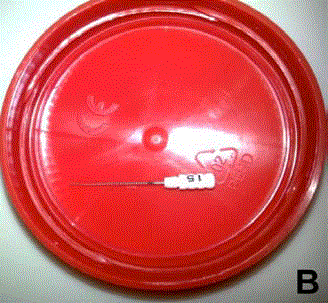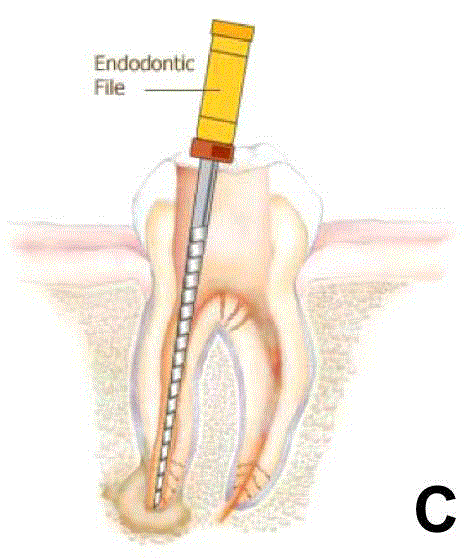Clinical Image
Accidents during Root Canal Treatment
Pedruzzi B1*, Di Carlo R2 and Girasoli Lm2
1Department of ENT, Ospedali Riuniti Padova Sud “Madre Teresa di Calcutta”, Via Albere 30, Italy
2Department of Neurosciences, Institute of Otorhinolaryngology, Padova University, Padova, Italy
*Corresponding author: Barbara Pedruzzi, Department of ENT, Ospedali Riuniti Padova Sud “Madre Teresa di Calcutta”, Italy
Published: 29 Mar 2018
Cite this article as: Pedruzzi B, Di Carlo R, Girasoli L.
Accidents during Root Canal Treatment.
Clin Surg. 2018; 3: 1950.
Abstract
A 46-year-old woman presented with an acute restricted painful area in her right throat. The
patient were in the Odontostomatology room during a dental root canal treatment, and she inhaled
the needle for dental root curettage. No dyspnea, No dysphonia, No dysphagia. An urgent X-ray
showed the presence of a metallic needle-shaped foreign body in the larynx ((Figure A), enlarge
detail on the right), in a very dangerous site for inhalation into trachea or bronchi and its hazardous
risks. A 70°C rigid videolaryngoscopic evaluation revealed the foreign body wedged in her larynx, in
detail the rubber dam was skewered between the anterior part of right false fold and laryngeal face
of epiglottis. Metallic portion of dental root needle wasn’t visible.
The foreign body (Figure B) was successfully removed in endoscopic view under local anesthesia
with laryngeal forceps (Jurasz forceps). The patient was discharged with rapid relief of symptoms.
Most dental procedures are accomplished while the patient is partially or totally supine; as a result,
all restorative patients have the potential to ingest or aspirate a dental item. Aspiration is generally
less frequent than ingestion. For the endodontic instruments: the incidence of aspiration was 0.001
per 100,000 root canal treatments and the incidence of ingestion was 0.12 per 100,000 root canal
treatments (Figure C). Early location of an inhaled or ingested foreign body facilitates appropriate
and timely treatment management and referral. The principle of nonmaleficence dictates the use
of preventive practices (i.e. rubber dam, ligatures, throat pack) when possible, both medically and
legally.
Figure A
Figure A
On the left, cervical X-ray showing a metallic needle-shaped foreign body in the larynx; on the right
enlarge detail of dangerous foreign body in the larynx.



